The fifth day of the tenth lunar month is the commemoration day of the birthday of Patriarch Bodhidharma. Patriarch Bodhidharma, also known as Bodhi Dharma, means “awakened Dharma” when translated. He is the 28th patriarch of Indian Zen and the first patriarch of Chinese Zen. He is honored as “the first patriarch in the land of the East” and is collectively known as the three great masters of the Liang Dynasty together with Master Baozhi and Master Fudashi. He was born in South India into the Brahmin caste. After becoming a monk, he was devoted to Mahayana Buddhism. During the ordinary years of the Liang Dynasty (520 – 526. Another theory says it was at the end of the Southern Song Dynasty), he sailed from India to Guangzhou. From there, he traveled north to the Wei Dynasty and taught people Zen everywhere. Zen blossomed and bore fruit in the land of the East and developed into the largest Buddhist sect in China. According to Buddhist historical records, when Patriarch Bodhidharma came to China, he was nearly 150 years old and left many magical legends.
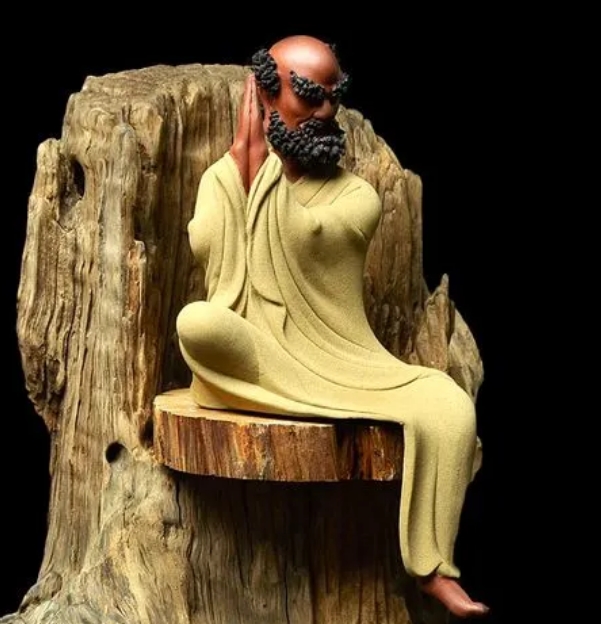
The patriarch came from the east.
Once, Bodhidharma asked his master: “After I have obtained the Dharma, to which country should I go to do Buddhist deeds? Please instruct me.”
The master said: “Although you have obtained the Dharma, you cannot travel far. Stay in India for the time being. After I pass away for sixty-seven years, you can go to Zhen Dan (i.e., China) to widely spread the wonderful Dharma of Buddhism and connect with the roots here. Don’t be in a hurry to go. That would make the sect decline in Zhen Dan.” Later, Bodhidharma traveled across the ocean. After three years of tossing on the sea, he finally arrived in Guangdong, China. Then he went north from Guangzhou and directly reached the territory of the Northern Wei Dynasty. He often taught people Zen.
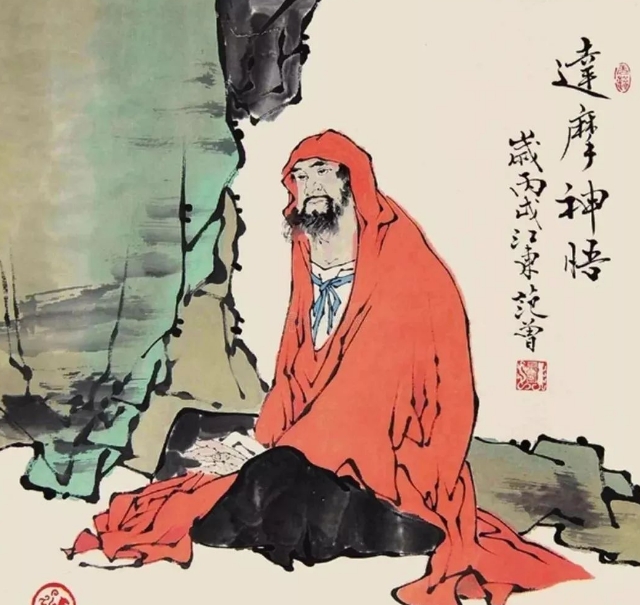
Emperor Wu’s discussion on merits and virtues.
Emperor Wu of the Liang Dynasty asked: “Since I ascended the throne, I have built temples, copied sutras, and ordained monks in countless numbers. What merits and virtues do I have?”
The patriarch replied: “There are no merits and virtues.”
Emperor Wu of the Liang Dynasty then asked: “Why are there no merits and virtues?”
The patriarch said: “This is only a small fruit in the human and heavenly realms, a cause with leakage. It is like a shadow following a form. Although it exists, it is not real.”
Emperor Wu of the Liang Dynasty then asked: “What is true merit and virtue?”
The patriarch replied: “Pure wisdom is wonderful and perfect. Originally, it is empty and silent without a self. Such merits and virtues cannot be obtained by worldly methods.”
Emperor Wu of the Liang Dynasty then asked: “What is the first meaning of the sacred truth?”
The patriarch said: “Vastly, there is no sage.”
Emperor Wu of the Liang Dynasty retorted: “Then who is facing me?”
The patriarch said: “I don’t know.”
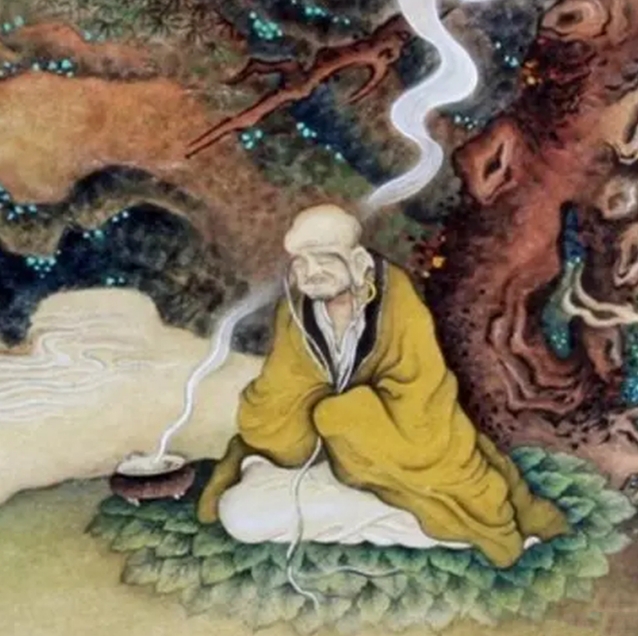
Crossing the river on a reed.
According to legend, after Emperor Wu of the Liang Dynasty awoke, he sent people to try to recall Bodhidharma. By the river, when Bodhidharma saw people coming after him, he casually broke a reed and threw it into the river. It turned into a small boat and he floated across the river to the north.
There is another version. It is said that when Master Shenguang (i.e., later the second patriarch Huike) intended to seek Dharma from Bodhidharma and chased after him closely, Bodhidharma crossed the river on a reed.
Many later literati successively created a large number of paintings and calligraphy works based on this allusion. Bodhidharma, as the 始祖 of Chinese Zen, has also become an important figure in Buddhist art themes.
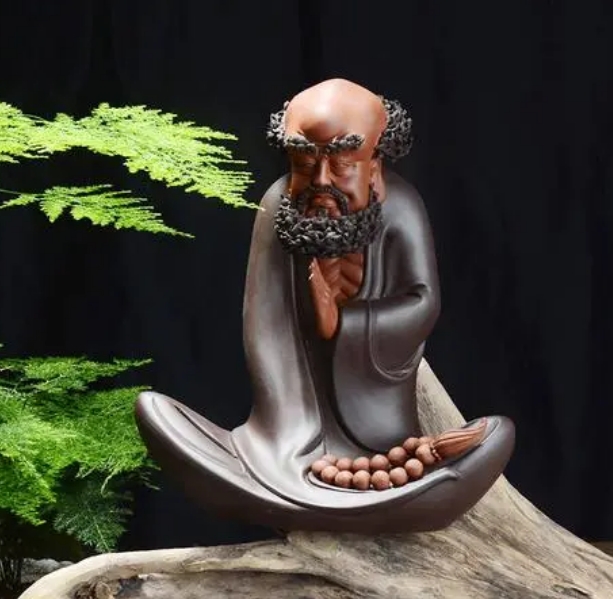
Nine years of facing the wall.
When Bodhidharma traveled in the Central Plains, he wandered and visited in the Songluo area. One day, on the Wuru Peak at the back of Shaoshi Mountain, he chose a cave to live in and began to practice facing the wall for years. It is said that in the stone cave, Bodhidharma sat facing the wall in silence all day long. Inside the cave, it was as quiet as if there was no one. After entering deep meditation, even the birds did not know there was someone here and actually built nests on Bodhidharma’s shoulder. Day after day, year after year. From 527 to 536 AD, he faced the wall for nine years (or some say ten years). When he left the cave, on the stone where he had sat in meditation facing the wall, there was actually an image of Bodhidharma facing the wall. The folds of his clothes were faintly visible, just like a light ink painting. People call this stone “the shadow stone of Bodhidharma facing the wall.” They call this natural cave “the cave where Bodhidharma faced the wall.” Until today, the ruins still exist.
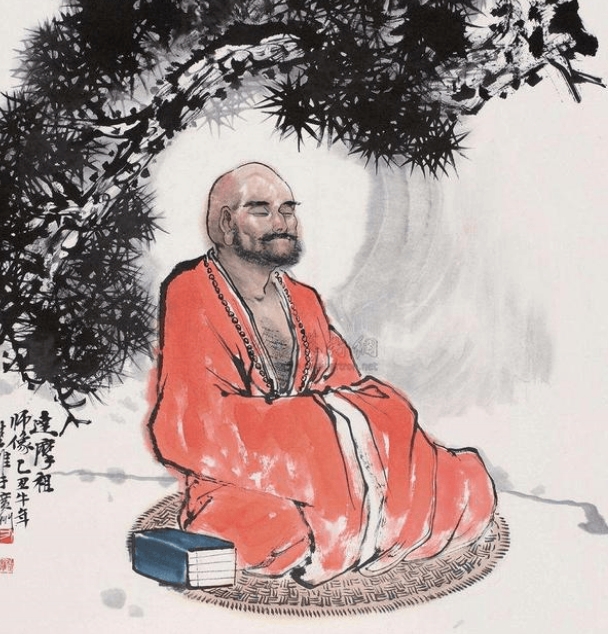
The method of calming the mind.
According to legend, after Bodhidharma faced the wall for nine years on Shaoshi Mountain, a forty-year-old learned and virtuous man came to pay his respects. He waited in the cold snow for a whole night. At dawn, the snow had already covered his knees. Bodhidharma knew that he was a vessel for Dharma and so he took him as a disciple and named him Huike.
Huike asked Bodhidharma: “My mind is not at peace. Please help me calm it.”
Bodhidharma replied: “Bring your mind! I will calm it for you.”
Huike said: “I cannot find my mind.” But Bodhidharma said: “Your mind has been calmed.”
Huike had some realization from this conversation. Later, he followed Bodhidharma to practice for many years and deeply studied the one vehicle Dharma. After that, Bodhidharma passed on the robe and Dharma and four volumes of the “Laṅkāvatāra Sūtra” to Huike. The verse for passing on the Dharma is: I originally came to this land to spread the Dharma and save those lost in delusion. One flower blooms with five leaves, and the result naturally comes into being.
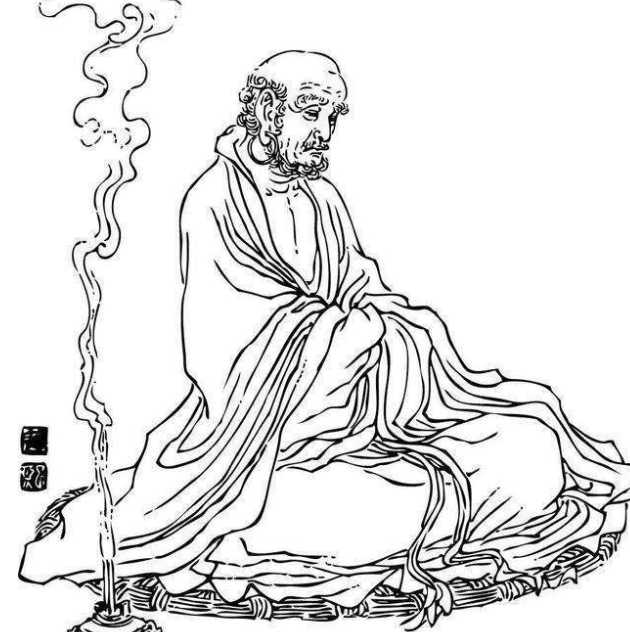
Returning to the west with one shoe.
Three years after the patriarch Bodhidharma passed away, one day, Song Yun, an envoy of the Western Wei Dynasty, was on his way back from a mission to the Western Regions. He met Patriarch Bodhidharma in the Congling Mountains. At that time, the patriarch was holding a straw sandal and coming gracefully. Song Yun stepped forward and asked: “Where are you going, master?” The patriarch said: “To the western paradise!” After Song Yun returned to the capital of the Wei Dynasty, he talked in detail about this experience. At that time, all the officials in the court were astonished. So they asked the disciples of Patriarch Bodhidharma to verify. Sure enough, they found that the coffin was empty except for one straw sandal. Immediately, everyone in the court was amazed. So the disciples followed the imperial decree and placed the straw sandal left by the patriarch for worship in Shaolin Temple.
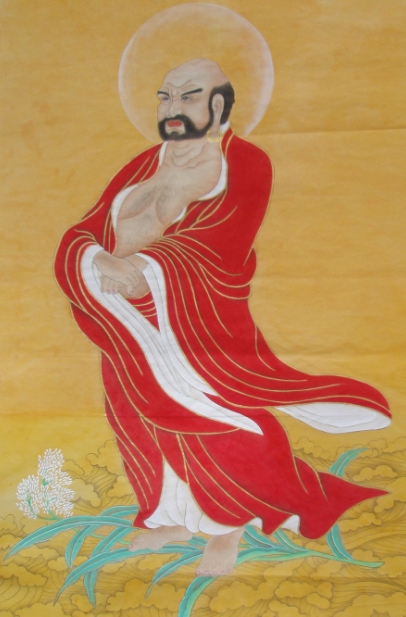
One flower with five leaves.
Chinese Zen has gone through hardships and the robe and bowl have been passed down from generation to generation. Through the vigorous promotion of the second patriarch Huike, the third patriarch Sengcan, the fourth patriarch Daoxin, the fifth patriarch Hongren, and the sixth patriarch Huineng, finally, one flower blooms with five leaves and flourishes in the secret garden. Later generations compare “one flower” to the sudden enlightenment school of the sixth patriarch Huineng, and “five leaves” to the five schools of the sudden enlightenment Zen, namely the Weiyang school, the Linji school, the Caodong school, the Yunmen school, and the Fayan school. Zen has become the largest sect of Chinese Buddhism.
These magical legends reveal the boundless merits and virtues of the patriarch. Truly:
The bamboo shadows sweep the steps, but the dust does not move.
The moon shines at the bottom of the pond, and there is no trace on the water.
In those days, the emperor did not understand the vastness.
Crossing the river on a reed shocked the world.
The moon shines at the bottom of the pond, and there is no trace on the water.
In those days, the emperor did not understand the vastness.
Crossing the river on a reed shocked the world.